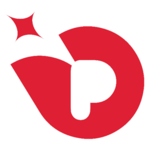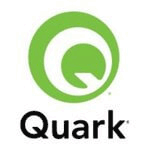Description

Ceros

Lucidpress
Comprehensive Overview: Ceros vs Lucidpress
Ceros, Lucidpress, and Shorthand are digital tools that cater to the creation of content or design, but they each serve distinct purposes and target markets. Here's an overview of each:
Ceros
a) Primary Functions and Target Markets
- Primary Functions: Ceros is a collaborative design platform that specializes in creating interactive and immersive digital content. This content can include interactive infographics, e-books, lookbooks, microsites, and more, without requiring coding skills. Its interactive features support the creation of engaging, multimedia-rich experiences.
- Target Markets: Ceros primarily targets marketers, designers, publishers, and creative teams who need to develop engaging digital content to capture audience attention. Industries using Ceros often include advertising, publishing, fashion, and any sector looking for interactive content.
b) Market Share and User Base
- While specific market share data might not be publicly available, Ceros is well-regarded in industries that require high-end digital content creation. It has grown significantly, boasting a client list with big names like Nike, Pepsi, and LinkedIn.
c) Key Differentiating Factors
- Interactivity: Ceros stands out for its ability to create deeply interactive and engaging content without requiring any coding skills.
- Collaboration: It offers strong collaboration features that accommodate team input and real-time feedback, streamlining workflows in creative teams.
- No-Code Requirement: This is a significant advantage for marketing teams that might not have programming skills but require sophisticated content.
Lucidpress
a) Primary Functions and Target Markets
- Primary Functions: Lucidpress is a design and brand templating platform that allows users to create print and digital marketing materials like brochures, flyers, newsletters, and social media graphics. It emphasizes brand consistency through lockdown templates.
- Target Markets: Lucidpress targets small to medium-sized businesses, educational institutions, and non-profits that need to produce marketing materials regularly while maintaining brand consistency.
b) Market Share and User Base
- Lucidpress is popular among organizations that prioritize brand consistency and efficient content creation. It is used by various schools, small businesses, and franchises, reflecting a broad but more niche audience compared to larger, more complex platforms.
c) Key Differentiating Factors
- Ease of Use: Lucidpress is known for its user-friendly interface, making it accessible to users without design experience.
- Brand Template Locking: A standout feature is its ability to lock brand elements within templates, ensuring that all materials produced adhere to brand guidelines.
- Focus on Brand Consistency: Lucidpress’s templating system is particularly beneficial for organizations where maintaining a consistent brand image is crucial across multiple locations or departments.
Shorthand
a) Primary Functions and Target Markets
- Primary Functions: Shorthand is a platform for crafting visually appealing, narrative-driven stories on the web. It enables the creation of long-form content with integrated multimedia elements like images, video, and animations, all without requiring coding skills.
- Target Markets: Its primary users are content creators, journalists, educators, and marketers who need to produce immersive storytelling experiences online. It is prominently used by media organizations, educational institutions, and content marketing teams.
b) Market Share and User Base
- Shorthand has become a favorite tool for media organizations and educational institutions that focus on detailed, story-driven content. It is used by prominent media outlets such as the BBC and The Guardian, suggesting a strong presence in narrative content markets.
c) Key Differentiating Factors
- Storytelling and Narratives: Shorthand’s strength lies in its ability to help users create rich, story-driven content experiences that are aesthetically compelling and engaging for readers.
- Ease of Publishing: Like the other platforms, Shorthand requires no code, making it accessible for journalists and writers who want to focus on content rather than technical aspects.
- Media Integration: It allows seamless integration of multimedia content, making it ideal for immersive editorial and educational experiences.
Comparison Summary
- Target Audience: Ceros and Shorthand serve marketers and creators focused on interactive and visually engaging content, though Shorthand emphasizes storytelling. Lucidpress focuses more on marketing materials and brand consistency.
- Complexity and Features: Ceros offers significant interactivity, while Shorthand specializes in storytelling. Lucidpress prioritizes ease of use with brand-focused features.
- User Interface: Lucidpress is often noted for its simplicity, while Ceros and Shorthand offer more complex features for creating interactive and narrative content.
In conclusion, the choice between Ceros, Lucidpress, and Shorthand often depends on the specific needs of the organization, such as the need for interactivity, brand consistency, or storytelling capabilities.
Contact Info

Year founded :
1999
Not Available
Not Available
Mexico
http://www.linkedin.com/company/desarrolloenproteccioncivilzonacentro

Year founded :
Not Available
Not Available
Not Available
Not Available
Not Available
Feature Similarity Breakdown: Ceros, Lucidpress
When comparing Ceros, Lucidpress, and Shorthand, these three platforms serve as tools for creating digital content but have different focuses and unique features. Here's a breakdown of their similarities and differences:
a) Core Features in Common
-
Drag-and-Drop Interfaces: All three platforms provide a drag-and-drop interface, allowing users to easily create content without needing extensive coding knowledge.
-
Templates and Themes: Each platform offers a variety of templates and themes to help users quickly start their projects.
-
Cloud-Based: These tools are cloud-based, ensuring that users can access their work from any location with internet connectivity.
-
Collaboration Tools: Features for multiple users to collaborate on a project simultaneously are present in all three, enabling teams to work together effectively.
-
Multimedia Integration: Support for integrating images, videos, and other multimedia content is a common capability, enhancing the visual appeal and engagement of the content.
-
Publishing and Sharing Options: All three platforms provide options for publishing and sharing content across different channels and formats.
b) User Interface Comparison
-
Ceros: The Ceros UI is designed to cater to designers looking for high-end interactive content creation. It has a more complex interface, equipped with robust tools akin to advanced graphic design software, making it ideal for users familiar with design or those who need high customization and interactivity.
-
Lucidpress: Lucidpress aims for a balance between ease of use and functionality, providing an intuitive and user-friendly interface. It offers a clean and straightforward layout which appeals to users looking for quick and simple design tasks, often likened to familiar office software.
-
Shorthand: Shorthand's interface is highly focused on storytelling and narrative structuring. It is very minimalistic and straightforward, emphasizing the content creation process, especially with long-form storytelling, making it easy for writers and editors to focus on the narrative rather than technical adjustments.
c) Unique Features
-
Ceros: One of the standout features of Ceros is its capability for creating highly interactive and immersive content without any coding, with tools tailored towards marketers and designers who need to produce captivating digital experiences.
-
Lucidpress: Lucidpress includes strong brand management features which allow companies to keep their collateral consistent across various outputs—this is particularly beneficial for businesses looking to streamline brand standards and management across diverse teams.
-
Shorthand: Shorthand is particularly unique in its specialization for creating visually rich, long-form story content. It emphasizes creating an immersive reading experience with scroll-based storytelling and interactive graphics, which is particularly useful for digital publishers and media companies.
Each of these platforms has carved out its own niche, catering to slightly different aspects of the digital content creation and publishing process. Depending on the specific needs related to interactivity, storytelling, or brand management, one may be more suitable than the others.
Features

Interactive Content Creation
Analytics and Insights
Design Without Code
Collaboration Tools
Publishing and Sharing
Publishing Options

Collaboration and Sharing
Integrations
Brand Management
Design and Templates
Best Fit Use Cases: Ceros, Lucidpress
Ceros, Lucidpress, and Shorthand are all digital content creation tools, each catering to specific use cases and offering unique features that make them suitable for different business needs and projects. Here’s how they stack up:
a) Ceros:
Best Fit Use Cases:
- Interactive Content Creation: Ceros is designed for creating engaging, interactive, and immersive content without writing any code. This is ideal for businesses aiming to create rich, interactive experiences, such as infographics, interactive eBooks, digital magazines, or microsites.
- Marketing and Advertising: It is highly suited for marketing teams that demand high-quality, interactive content to effectively engage their audience and facilitate online lead generation.
- Agencies and Creative Teams: Creative agencies looking to offer standout, dynamic content for their clients can greatly benefit from Ceros, which supports the creation of visually compelling and technically advanced content.
Industries and Company Sizes:
- Ceros caters to medium to large companies and agencies in the marketing, advertising, media, and publishing industries looking to enhance customer engagement through interactive content.
b) Lucidpress:
Best Fit Use Cases:
- Brand Management and Consistency: Lucidpress is tailored for teams that need to maintain brand consistency across various collateral, allowing for easy collaboration on brand-compliant templates and materials.
- Template-based Design: It is ideal for small to medium-sized businesses or teams within larger organizations that require user-friendly, drag-and-drop functionality to create branding documents, marketing materials, and internal communication assets.
- Remote and Distributed Teams: Provides cloud-based access, making it suitable for teams working across different locations.
Industries and Company Sizes:
- Lucidpress is beneficial for educational institutions, non-profits, small businesses, and any industry where brand consistency and easy-to-use tools for content creation are paramount.
c) Shorthand:
Best Fit Use Cases:
- Storytelling and Long-form Content: Shorthand excels in creating visually appealing long-form content, such as articles, reports, and storytelling pieces that require a strong narrative structure paired with multimedia integration.
- Publishing and Journalism: Media companies and journalists use Shorthand for digital storytelling, creating immersive reading experiences without needing to delve into technical web development.
- Content-heavy Projects: Ideal for content marketers and editorial teams focused on delivering in-depth and aesthetically engaging stories, portfolios, and case studies.
Industries and Company Sizes:
- Shorthand is favored by medium to large companies, educational institutions, and media organizations that prioritize high-quality content delivery and narrative-driven storytelling.
d) Industry Verticals and Company Sizes:
- Ceros primarily caters to larger enterprises and agencies in the media, advertising, and marketing sectors, valuing interactivity and engagement.
- Lucidpress is adaptable for small to medium businesses and organizations of any size prioritizing brand consistency and ease of use, spanning sectors like education, non-profits, and various SMBs.
- Shorthand serves content-heavy industries such as publishing and media, typically focusing on narrative storytelling and users who want to produce engaging, high-quality digital stories.
Each of these tools has carved its niche by targeting specific needs within digital content creation, allowing businesses to choose based on their project requirements, industry focus, and company size.
Pricing

Pricing Not Available

Pricing Not Available
Metrics History
Metrics History
Comparing teamSize across companies
Conclusion & Final Verdict: Ceros vs Lucidpress
To determine the best overall value among Ceros, Lucidpress, and Shorthand, we must evaluate them based on key factors such as usability, features, pricing, customer support, and specific use cases.
A) Best Overall Value
Lucidpress offers the best overall value for users seeking a comprehensive and cost-effective solution for creating professional-looking documents and graphics. It strikes a balance between powerful features and accessibility, making it suitable for a wide range of users from individuals to small businesses.
B) Pros and Cons of Each Product
Ceros:
- Pros:
- Exceptional for creating interactive and immersive content.
- Highly flexible with a drag-and-drop interface.
- Strong analytics and integration with other marketing tools.
- Cons:
- Steeper learning curve compared to others.
- Higher cost, which may not justify the expense for simpler projects.
- Primarily aimed at larger teams and enterprises.
Lucidpress:
- Pros:
- User-friendly with a smooth onboarding process.
- Versatile with robust templates and design tools.
- Competitive pricing with flexible subscription options.
- Cons:
- Advanced customization may be limited compared to more specialized tools.
- Some users might find it less powerful for creating highly interactive experiences.
Shorthand:
- Pros:
- Excellent for long-form storytelling and narrative-driven content.
- No technical skills required for creating visually stunning content.
- Great for publishers and storytellers focusing on digital narratives.
- Cons:
- Limited design versatility outside story-based content.
- May lack functional diversity needed for broader marketing needs.
- Pricing can be steep for smaller teams or individuals.
C) Recommendations for Users
-
Select Ceros if:
- You're part of a large organization seeking to create highly dynamic and interactive content.
- Your projects demand sophisticated analytics and extensive integrations.
- Budget is less of a constraint and you require flexibility beyond digital publications (such as marketing campaigns).
-
Opt for Lucidpress if:
- You need a versatile design tool for creating a wide variety of visuals, documents, and graphics.
- You're looking for an affordable solution that doesn't compromise on functionality.
- You value ease of use and comprehensive customer support.
-
Choose Shorthand if:
- Your focus is on storytelling and creating compelling, visual narratives.
- You prefer to work within a tool that emphasizes simplicity and aesthetic quality in long-form content.
- Your projects don't require extensive interactive elements beyond storytelling.
Ultimately, the decision depends on your specific needs, budget constraints, and the type of content you wish to create. For most users who need a balance of features and affordability, Lucidpress provides the best value. However, if storytelling or interactive content is a top priority, Shorthand and Ceros offer unique advantages in those areas.
Add to compare
Add similar companies



